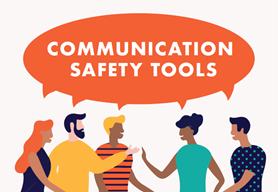By Chandra Farrer
Find the Q-Tip below! There is a Q-Tip hidden in this article. Find it by reading the article and clicking on the link. Once you find it, the Q-Tip will automatically download so you can save it to your collection. Everyone who collects all of the Q-Tips will have the chance to win great prizes.
Test your knowledge & win a gift card! After reading the article, take this quiz for your chance to win a gift card!
*You must be logged into VPN to click the hyperlinks.
Women’s College Hospital is implementing three communication safety tools which can be used in the ambulatory care environment in a variety of clinical and non-clinical work environments. They are:
- “I have a safety concern”
- SBAR
- Teach Back

This week, we continue to explore effective communication to promote patient safety and a strong safety culture through the use of SBAR (Situation Background Assessment Recommendation). SBAR is a situational briefing tool providing a standardized communication framework. Standardization ensures concise, accurate, clear and timely communication, which is particularly important given variations in communication styles. SBAR can be used to discuss or escalate an issue to generate an action plan. SBAR is not used for general information sharing or for non-actionable items.
| SBAR | |
| S | Situation Concise statement of the problem |
| B | Background Pertinent and brief information regarding the problem |
| A | Assessment Analysis and considerations of options – what you found/think |
| R | Recommendation Action requested or recommended- what you want |
SBAR can be used in verbal or written communications with team members. For access to a written template to create a poster using SBAR click here
To learn more and see our comic on SBAR click here
Click on this week’s QTip for general tips for effective use of SBAR.